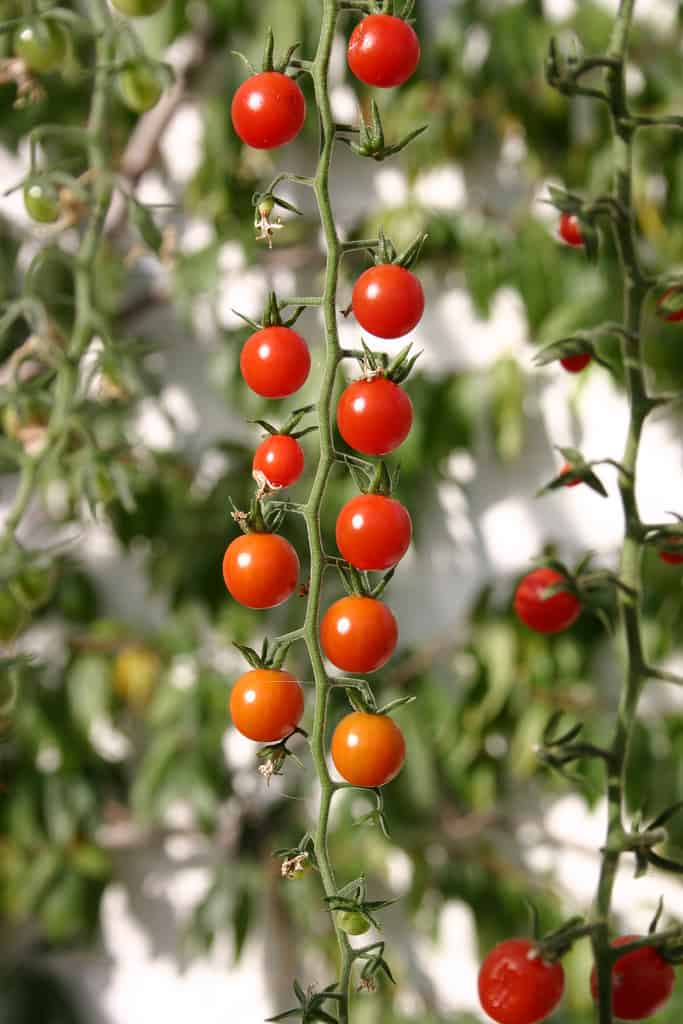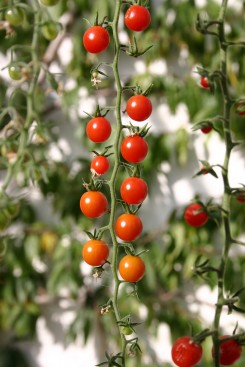A group of scientists from around the world published the genome of the tomato, Solanum lycopersicum, in the May issue of the science journal Nature. The project took nine years to produce results, with contributions from scientists in the USA, the UK, Europe, India, and Asia. One of the most accurate and complete sequences ever published, the tomato genome could lay the groundwork for increased food safety, higher crop yields, and improved human health.
The tomato is one of the world’s most important salad crop plants, and its production has grown in recent years. The sequencing of the tomato genome provides scientists with much-needed information that may help produce tomato plants that are hardy and disease-resistant, or that have other desirable characteristics.
The genomes of thousands of species have been either partially or fully sequenced to date, including those of viruses, pathogenic bacteria, yeast, and certain plants and animals. The Human Genome Project, completed in 2003, is probably the best-known DNA sequencing project of all time.
The sequence of the DNA isn’t all that matters, though. Looking at the tomato genome sequence is like trying to read a book with nine hundred million letters in it, in an unknown language. Biologists use computer software to predict which regions of the genome are likely to be genes, and compare those regions to other species to figure out what the genes are responsible for doing. However, this technique isn’t always reliable, and if there are no similar genes found elsewhere, extensive experimental work is required to determine the gene’s function.
Most of the tomato genome is “junk DNA,” meaning that it does not contain genes and therefore does not encode any function. So only a relatively small number of those nine hundred million letters are actually meaningful; the rest is just biological jibber-jabber. This junk DNA made sequencing the tomato genome even more of a challenge, since non-coding DNA regions tend to have repetitive sequences or be tightly packed in dense DNA structures — called heterochromatin — rendering the DNA less accessible for the sequencing process.
The vast majority of the tomato’s genes are encoded close to the ends of its twelve chromosomes, and these regions are often the most difficult to sequence. Despite these obstacles, the researchers managed to sequence over 80% of the genome and identify 90% of all genes present. The tomato genome is now one of the most complete and accurate genomes available.
Evolution takes place on the DNA level, so closely related species have similar DNA sequences. Scientists can therefore sequence the genome of one species, and simultaneously learn about its relatives. For example, the tomato genome not only provides valuable information about the tomato plant, but also about other important crop plants such as peppers. The tomato is often studied as a model for the development of fleshy fruits, so the information gained from the tomato sequencing project educates scientists about a number of other fruits including strawberries and melons.
Over the last fifteen years, transgenic crop plants have emerged as a common feature in our everyday diets. This trend is largely due to the genome sequencing of major crops like corn, rice, canola, and potato. The availability of genome sequences for these plants has allowed scientists to engineer them to be disease-resistant, insect-resistant, and herbicide-tolerant. Crops have also been engineered to contain higher-than-natural levels of important dietary vitamins and minerals like antioxidants, beta-carotene, and iron.
Certain fruits have been engineered to last longer after being harvested, and particular species of trees have been optimized for paper production by decreasing the amount of an organic substance, lignin, produced by the tree. The sequencing of the tomato genome adds it to the list of crop plants that could benefit from these genetic technologies.
As scientists continue to decipher the language of DNA, the possibilities for genetic modification of crop plants are essentially limitless.
Source: Nature



